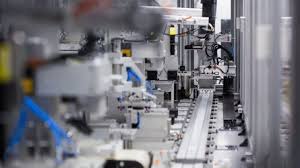
Breaking News
 Mike Rowe appears to be receiving flak for daring to explore the potential dangers of vaccines...
Mike Rowe appears to be receiving flak for daring to explore the potential dangers of vaccines...
 How to Keep Potatoes Fresh for a Year!
How to Keep Potatoes Fresh for a Year!
 A high school student has amazed the global science community with a discovery...
A high school student has amazed the global science community with a discovery...
Top Tech News
 The 6 Best LLM Tools To Run Models Locally
The 6 Best LLM Tools To Run Models Locally
 Testing My First Sodium-Ion Solar Battery
Testing My First Sodium-Ion Solar Battery
 A man once paralyzed from the waist down now stands on his own, not with machines or wires,...
A man once paralyzed from the waist down now stands on his own, not with machines or wires,...
 Review: Thumb-sized thermal camera turns your phone into a smart tool
Review: Thumb-sized thermal camera turns your phone into a smart tool
 Army To Bring Nuclear Microreactors To Its Bases By 2028
Army To Bring Nuclear Microreactors To Its Bases By 2028
 Nissan Says It's On Track For Solid-State Batteries That Double EV Range By 2028
Nissan Says It's On Track For Solid-State Batteries That Double EV Range By 2028
 Carbon based computers that run on iron
Carbon based computers that run on iron
 Russia flies strategic cruise missile propelled by a nuclear engine
Russia flies strategic cruise missile propelled by a nuclear engine
 100% Free AC & Heat from SOLAR! Airspool Mini Split AC from Santan Solar | Unboxing & Install
100% Free AC & Heat from SOLAR! Airspool Mini Split AC from Santan Solar | Unboxing & Install
 Engineers Discovered the Spectacular Secret to Making 17x Stronger Cement
Engineers Discovered the Spectacular Secret to Making 17x Stronger Cement
Tesla Maxwell Battery: Kyocera/24M Venture Might Provide Hints

On Wednesday June 27, 2019 we published an article (ref) on a Kyocera/24M manufacturing process. That process sounded very similar to the Maxwell/Tesla manufacturing process using a solvent-free electrode manufacturing process and thick electrodes:
From the Kyocera/24M article:
The use of thick electrodes significantly reduces inactive materials content – copper, aluminum and separator – yielding substantial cost savings.
Moreover, using electrolyte as the processing solvent results in the elimination of numerous capital- and energy-intensive steps like drying, solvent recovery, calendaring and electrolyte filling. The elimination of these steps, and the reduction in plant footprint associated with the steps, yields a capital reduction of up to 50%.

 Wall Street wants to go 24/7
Wall Street wants to go 24/7

